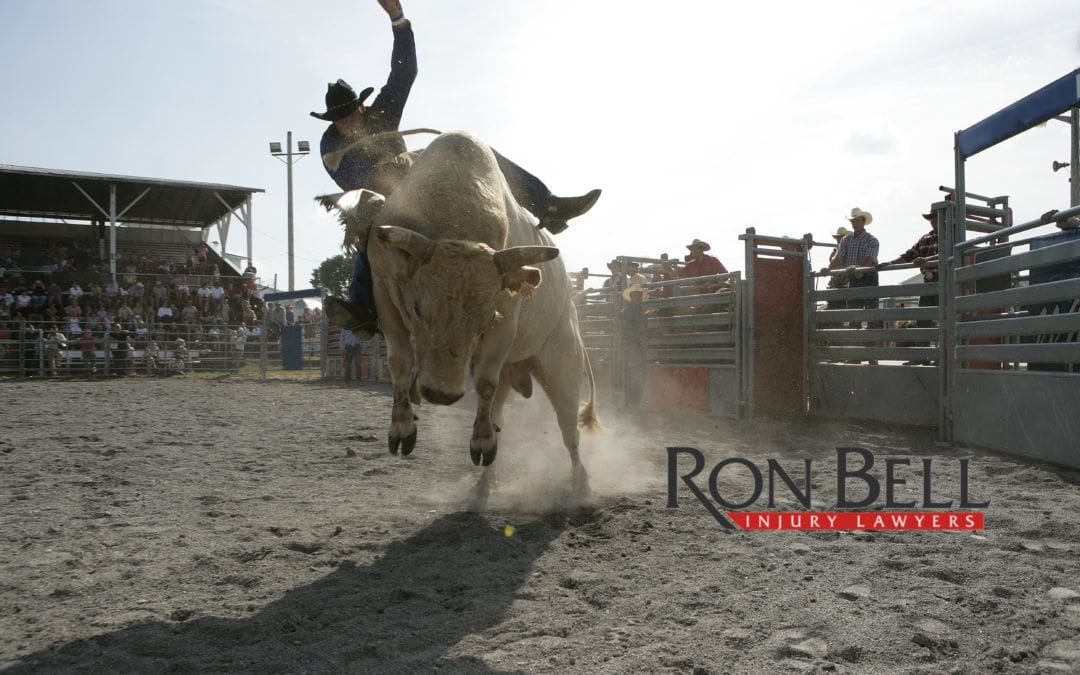Rodeos – Summer Fun at What Cost?


The bell rings, the gate opens and out comes a bucking bronco or bull. The daring rider clings tight to his ride until he dismounts, and even then the danger isn’t over. Immediately rodeo clowns swoop in to protect the exiting rider, the animal keeps bucking and anyone nearby can be at risk.
And then, just like that, almost as soon as it started, it’s over – only to repeated by the next competitor.
It’s played out countless times across New Mexico, a state with a rich rodeo history including the 4th of July Maverick Club Rodeo, the longest running open rodeo in the west. That’s not to mention the hundreds of competitions at fairgrounds and competitions like those hosted by the New Mexico Rodeo Association and New Mexico Junior High School Rodeo Association.
Inherent Dangers for Participants
While the New Mexico Equine Activity Statute, enacted in 1993, protects those that participate and host rodeos, the inherent dangers at said events are ever present. For the competitors in any event – bareback riding, saddle bronc riding, team roping, barrel racing and steer racing – injuries range from the nuisance to the fatal.
Annually, the U.S. Professional Rodeo circuit averages one or two deaths. A study by Justin Sportsmedicine Team in Texas reported 2,026 head and face injuries, 1,536 knee injuries and 1,476 shoulder injuries occurred at rodeo events between 1981 and 2005.
A 2007 study by the International SportMed Journal also found that rodeo has an injury rate “10 times greater than football and 13 times greater than ice hockey.”
Riders risk head-injury, neck, and spinal injuries, lacerations, paralysis, thumb and hand injuries, as well as a potential to injure just about any part of their body. The injuries to competitors have referenced concussion safety by the National Football League, and sparked debate regarding national rodeo attire and response.
What little data has been collected about rodeo injuries, one study found 859 concussions were registered during various competitions such as calf roping, bareback riding and bull riding over the same 1981 to 2005 period. This occurs, even when competitors are wearing helmets.
Outside of the Professional Bull Riders Circuit, which requires anyone born after 1994 to wear a helmet, many riders are still seen wearing cowboy hats – a trend some competitors are trying to change. And helmets do little when the unexpected happened, as a freak rodeo accident showed when it killed a Kansas City girl. Her horse apparently had a heart attack and it rolled on top of her.
Risks to Spectators and Staff
Injuries are also not just relegated to riders. Staff such as rodeo clowns, photographers, and spectators may also be hurt.
New Mexico Equine Activity Statute
Nevertheless, the 1993 statute recognized the dangers of the sport. “The legislature recognizes that persons who participate in or observe equine activities may incur injuries as a result of the numerous inherent risks involved in such activities,” it says. It further states that no one “is liable for personal injuries or for the death of a rider that may occur as a result of the behavior of equine animals while engaged in any equine activities.”
Conditional Limited Liability
However, while the sport is recognizably dangerous, negligence for safety by the operator, owner, trainer or promotor can make one liable.
This includes instances where they knew or should have known that the equipment was faulty, they didn’t check the rider’s ability to participate, or the existence of a “dangerous condition” at the facility that they knew about.
Preventive Practices
Simple maintenance of the facility, sufficient warning signs, and clearly marked areas can go a long way to helping.
Source: Justin Sportsmedicine Team Common Rodeo Injuries
Why Choose Ron Bell Injury Lawyers?
We Get Results!
